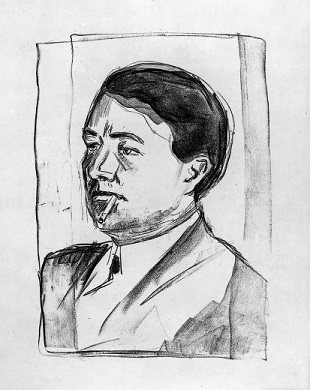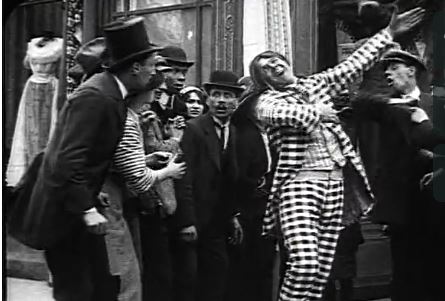Come una sorella
R: Vincenzo C. Dénizot. K: Segundo de Chomón. D: Lydia Quaranta, Giovanni Casaleggio, Berta Nelson. P: Itala Film, Torino. It 1912
Print: Museo Nazionale del Cinema / EYE
Dutch titles
“The short adventure film Come una sorella (…) features the character of Nelly, who sings and dances in an tabarin (cabaret) called Alhambra. The name alone of this local triggers images of faraway lands and exotic civilizations. Hence, this film stands out as an exception to the important rule that the contemporary drama before 1913 did not include orientalist elements; as a result of its ordinary settings, it was less expensive than the diva film, born the following year. On the other hand, it would also be erroneous to claim that all diva films were lavish orientalist spectacles. (…) Hence, this diva film is an exception to the equally important rule of an alliance among orientalism, aristocracy, and stardom that echoes the diva’s power through the cost of the sets and the variety of her wardrobe.
(…)
In Come una sorella, the struggle of values plays itself out within one woman, Nelly, a dancer who performs like a tempting Salome in an orientalist atmosphere. Nelly’s movements arouse the cinematic screen itself to the point that is overwhelmed by vivid red flames. The same kind of tinting – a red that looks like fire mixed with blood – pervades the screen as soon as the airplane of the stunt pilot, Kosalevsky, crashes to the ground, leaving him between death and life. The film’s associations between excitement and destruction, modern technology and female sexuality, are undeniable, but they are resolved when the cabaret singer becomes the adoring nurse who brings her beloved pilot back to health.”
Angela Dalle Vacche: Diva: Defiance and Passion in Early Italian Cinema. University of Texas Press 2008, p. 83, 188
About Lydia Quaranta
“Lydia or Lidia Quaranta was born in Turin, Italy in 1891. She started her career as stage actress at the company of Dante Testa. In 1910 she debuted in film, together with her sister Letizia Quaranta, when the company Itala Film enrolled both. Her true film debut though was in a short called L’ignota/The Unknown Woman (1910), produced by Aquila Films and directed by Edoardo Bencivenga. After a few more Aquila productions, Quaranta played steadily at Itala, as in the airplane drama Come una sorella/Like a Sister (1912, Vincenzo Denizot), the sensational drama Padre/Father (1912, Dante Testa, Gino Zaccaria), starring Ermete Zacconi, Lo scomparso/The Dread of Doom (1913, Dante Testa) with again Zacconi, and the crime story Tigris (1913, Vincenzo Denizot). Together with her sister Letizia, she played in Addio giovinezza!/Goodbye youth! (1913, Nino Oxilia). In 1914 Lydia Quaranta’s cinema career reached its apex when she had the title role in the mega-production Cabiria. ”
filmstarpostcards

Another “tempting Salome”:
L’ultima vittima
R: Roberto Roberti. D: Antonietta Calderari, Giuseppe De Witten, Roberto Roberti, Federico Elvezi. P: Aquila Films, Torino. It 1913
Print: Museo Nazionale del Cinema/EYE
French titles
“Emma Vallona, an oriental dancer, is suffocated by debts due to her expensive life; so she does not hesitate to induce the Minister d’Angy to endorse a bill in her favour. While the Minister is gradually being overwhelmed by this scandal, which contributes to destroy his political career, she carefree moves to Spain under the false name of Madame d’Ambois. There she meets the Prince of Gébraléon, who asks her to marry him. She agrees but, just before the wedding, the Minister d’Angy reappears. Fearing that he may reveal to her future husband her past, Emma turns to his loyal servant to kill d’Angy. But the servant, in revenge for the woman’s coldness and hardness in rejecting his love, teams up with D’Angy, and together they reveal her mischievous plans to Gébraléon. The revenge of the Prince is terrible.”
Vimeo


 Totò entusiasta della nuova moda
Totò entusiasta della nuova moda